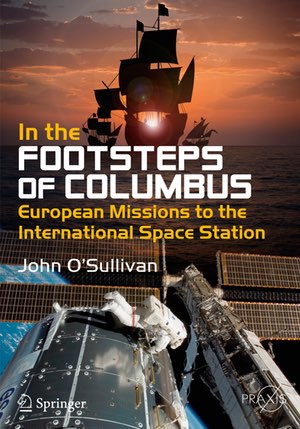Review: In the Footsteps of Columbusby Jeff Foust
|
| We don’t get much information about why those missions were flown, or why those experiments were chosen, or even why ESA is participating in the station in the first place. |
Author John O’Sullivan takes a straightforward chronological approach, starting with a quick review of pre-ISS missions involving European astronauts and cosmonauts. During the ISS era, each mission involving European astronauts gets its own chapter, including both short-duration trips to the ISS on shuttle or Soyuz taxi flights, or long-duration stays on the ISS.
At one level, those chapters are quite detailed. O’Sullivan provides extensive technical and other information about those missions, down to an examination of the various mission patches and descriptions of the experiments and other investigations they carried out. He recaps short-duration missions on a day-by-day basis, and long-duration ISS stays on a weekly basis. Most of this information is from publicly available sources, including blogs kept by some of the ESA astronauts during their missions.
While the book is rich in detail on who, what, and when, there’s far less about why. We don’t get much information about why those missions were flown, or why those experiments were chosen, or even why ESA is participating in the station in the first place. The book doesn’t go behind the scenes of the program, perhaps because there’s little use of additional sources beyond official documents about those missions (the book’s bibliography, only about a page long, is primarily books either written by astronauts or other space historians.)
The book’s review of ISS missions ends with André Kuipers’ “Promisse” mission to the ISS in late 2011 and 2012. O’Sullivan explains that he chose that cutoff date for several reasons, including the lack of European astronauts launched in 2012 and that future missions involved a new class of astronauts selected in 2009. That makes the book a little bit dated, since it does not discuss those missions flown even a couple of years ago. “ESA were launching astronauts at such a rate that I had to draw the line somewhere,” he explains in the preface (emphasis in original.)
Thus, while In the Footsteps of Columbus will give you an overview rich in technical details about Europe’s role in the ISS, it doesn’t offer much depth about why those events took place. That makes the book at times like reading a press kit for a mission rather than a thorough history that puts those missions in context. It may, then, be best suited for future historians who will find it a useful reference as they dig deeper in the why and how, and not just the who and when, of Europe’s place in space.
